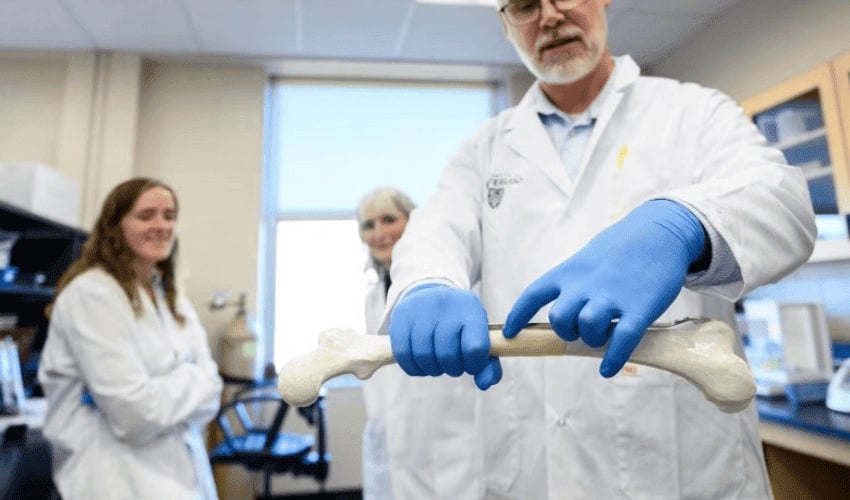Researchers Develop Personalized Bone Grafts Using 3D Printing

3D printing is gradually transforming the medical field, offering increasingly sophisticated solutions. Most recently, a team of researchers at the University of Waterloo developed a material that reproduces the mechanical characteristics of human bone. Thanks to its ability to be 3D printed with high precision, this material could, in time, make it possible to design tailor-made bone grafts, offering patients personalized treatment.
Through his collaborations with orthopedic surgeons at Toronto’s Mount Sinai Hospital, systems design specialist Professor Thomas Willett became aware of the complexity of current bone reconstruction techniques. Faced with cumbersome and technically demanding procedures, he envisioned a radically new approach: harnessing the potential of 3D printing to create more accessible, precise and customizable bone substitutes.
An Innovative Material for Bone Grafts Made to Each Patient
In many cases, reconstructive surgery requires the restoration of damaged bone segments. Traditionally, this task has relied on the use of metal parts or grafts from human donors to promote bone regeneration. However, this approach poses a major challenge: finding a bone fragment that is sufficiently compatible, both in shape and structure, with that of the patient often proves complex, if not impossible, sometimes compromising the effectiveness of the treatment.
The emergence of materials compatible with the human body and suitable for 3D printing opens up new perspectives in bone surgery. It would enable practitioners to design implants tailored to each patient’s anatomy, thus simplifying operations. This tailor-made approach would reduce post-operative complications, such as infections or rejection. According to Prof. Willett, “This would remove the need for the metal screws and plates that surgeons would normally use.”
Researchers at the University of Waterloo have developed a new nanocomposite material, combining a triglyceride-like fat with a tiny particle called hydroxyapatite. According to Dr. Willett, this particle plays an essential dual role: it reinforces the structure of the material, making it stronger and more durable, while creating an ideal surface to promote integration with bone cells. As healing progresses, this material facilitates the integration of the graft with the surrounding bone tissue, enabling progressive, natural regeneration of the damaged bone. The researchers are currently refining their material so that it is both compatible with the human body and perfectly suited to 3D printing.
The researchers’ aim is to design a material that can withstand the physical stresses of the human body, while gradually degrading to promote bone regeneration. Their ambition is also to make this material compatible with the most advanced 3D printers, thus ensuring grafts perfectly adapted to each patient’s anatomy. You can find out more from the University of Waterloo HERE.
What do you think of the use of 3D printing for bone grafts? Let us know in a comment below or on our LinkedIn, Facebook, and Twitter pages! Don’t forget to sign up for our free weekly Newsletter here, the latest 3D printing news straight to your inbox! You can also find all our videos on our YouTube channel. If are interested in finding more 3D printing news in the medical and dental sector, click HERE.







